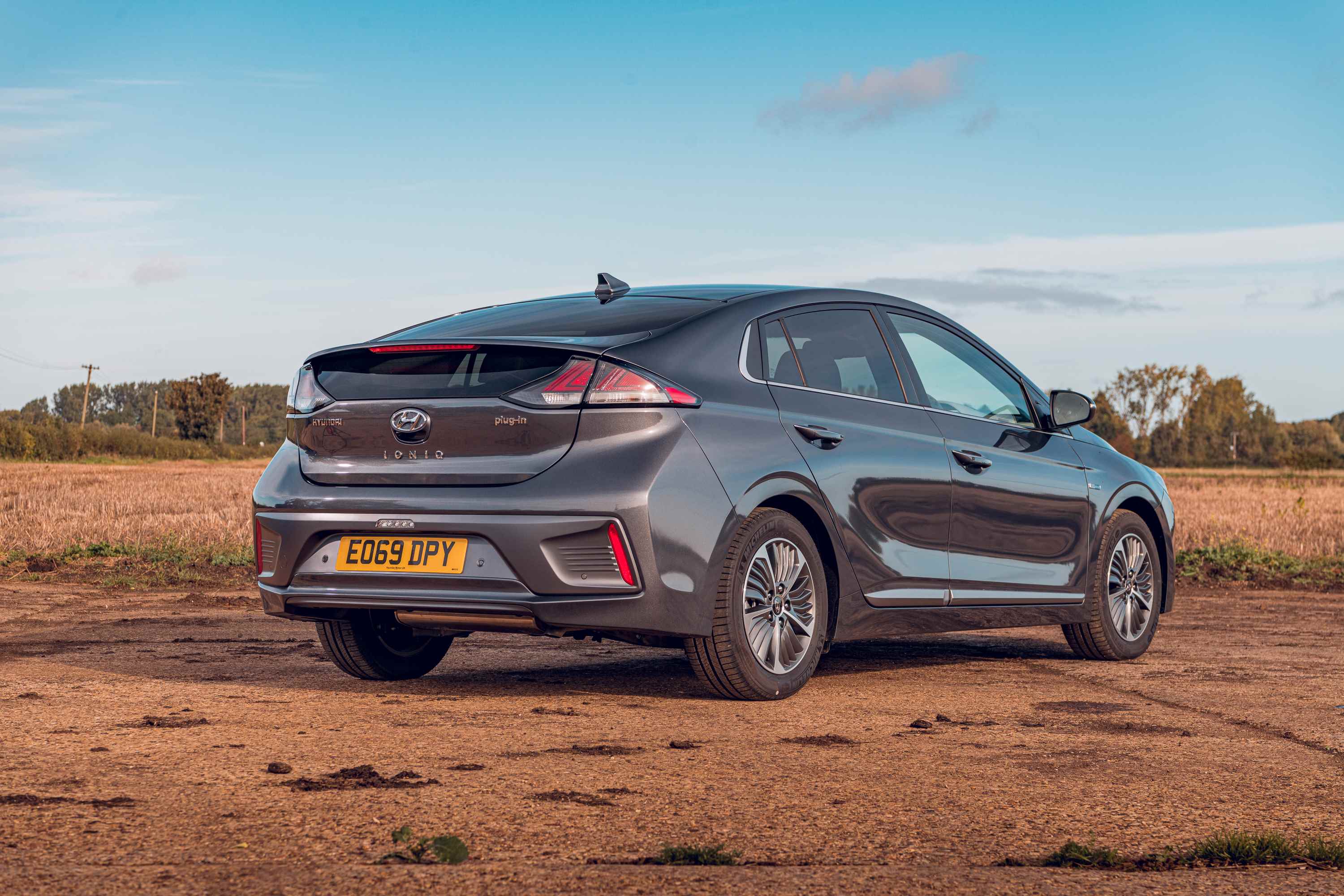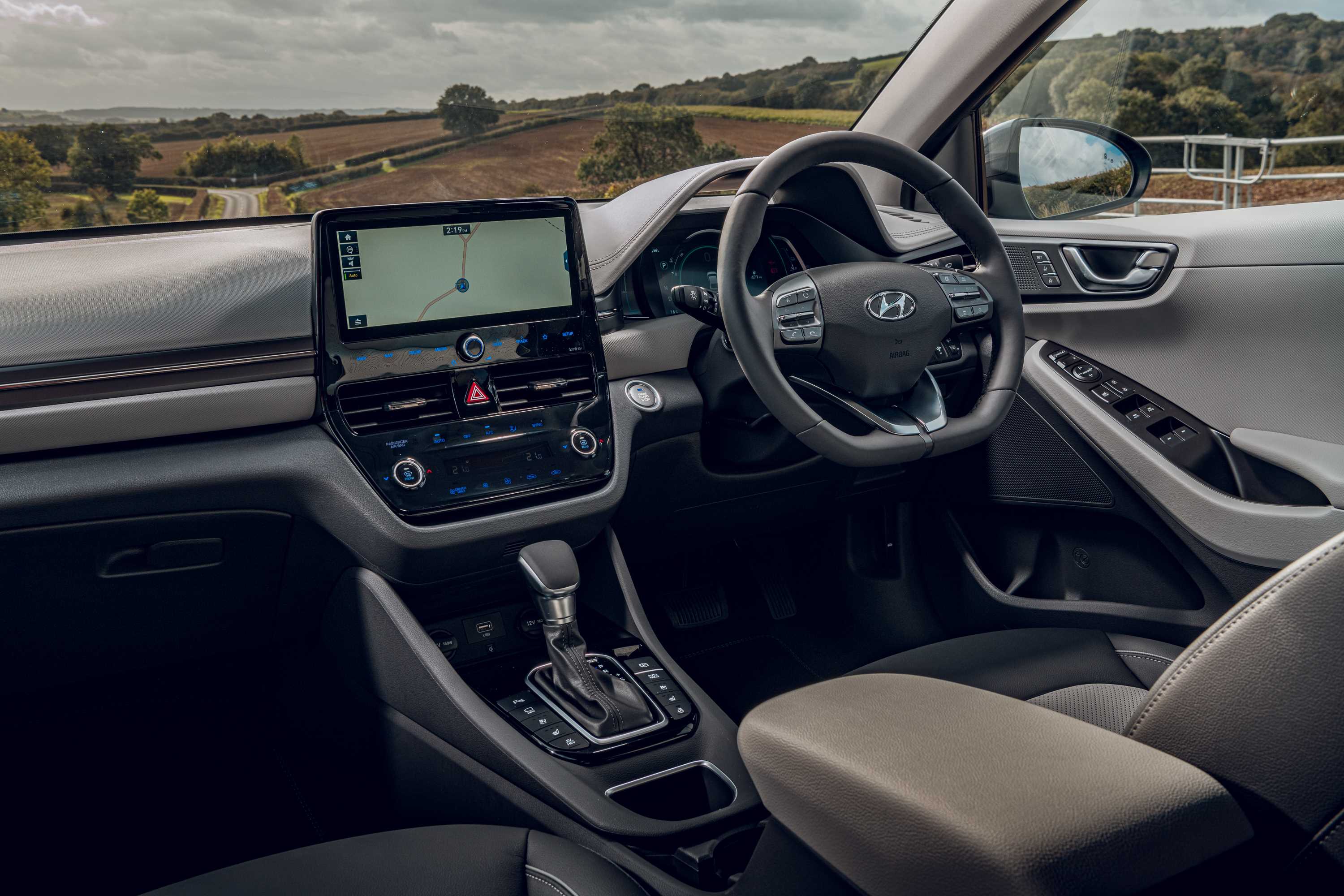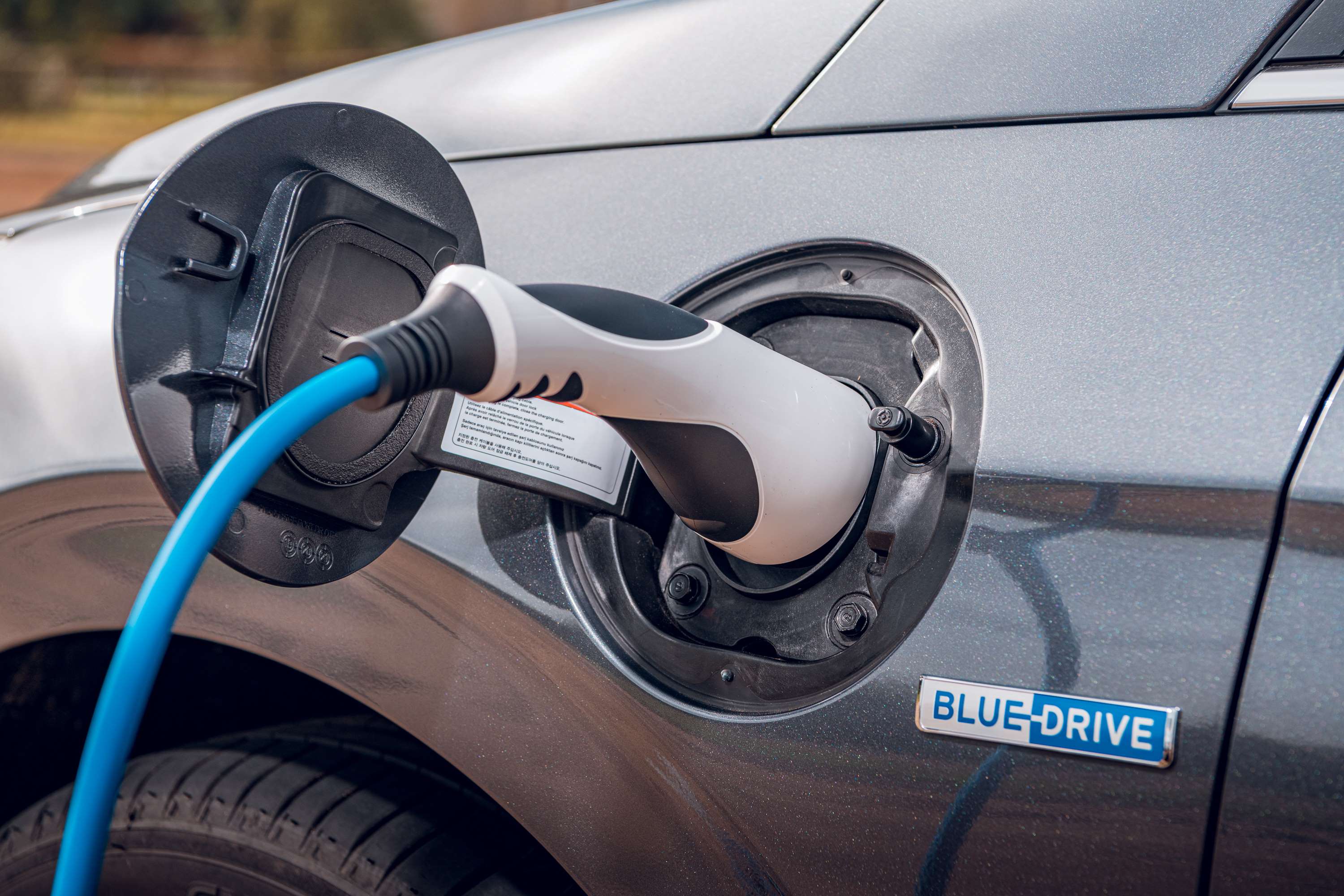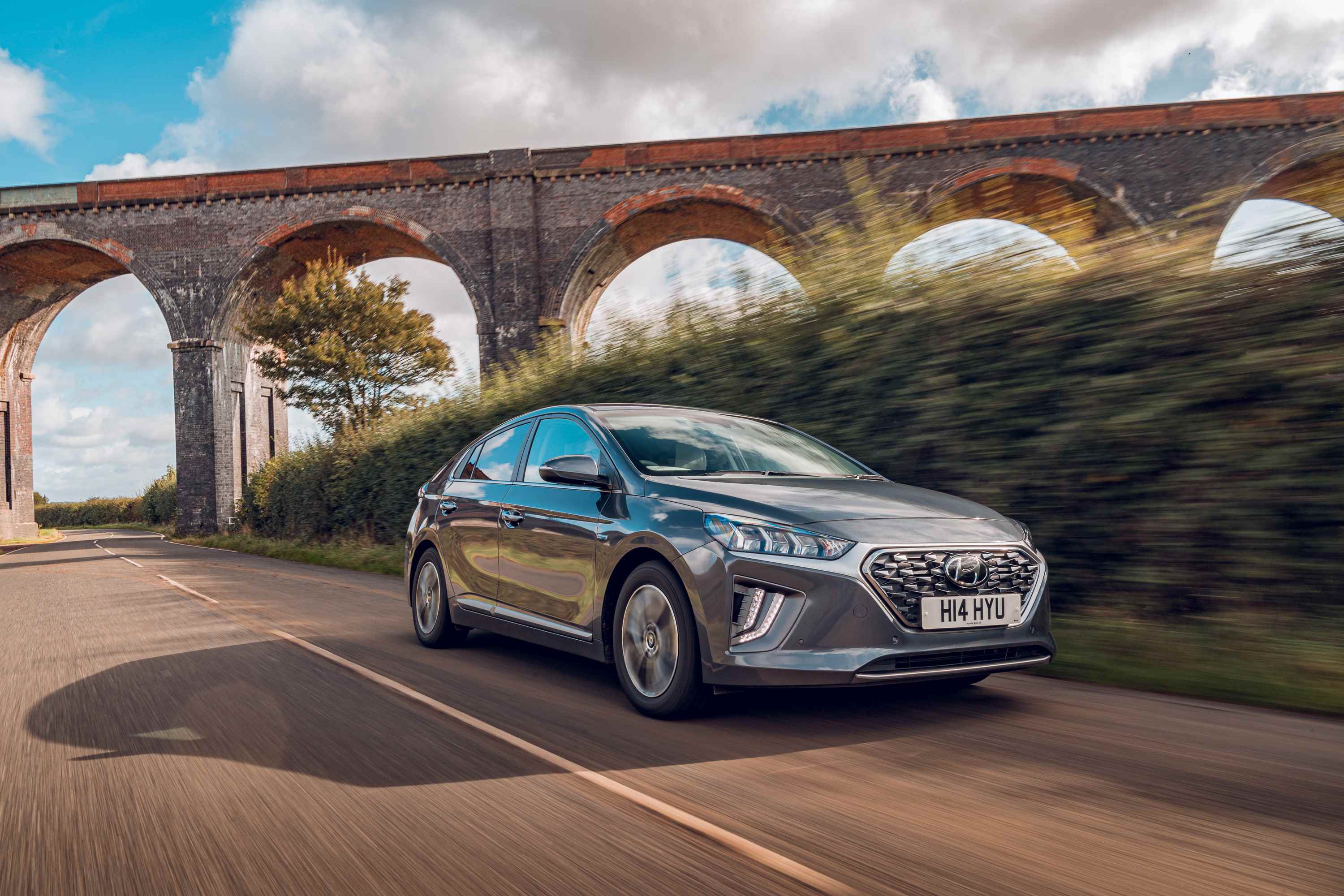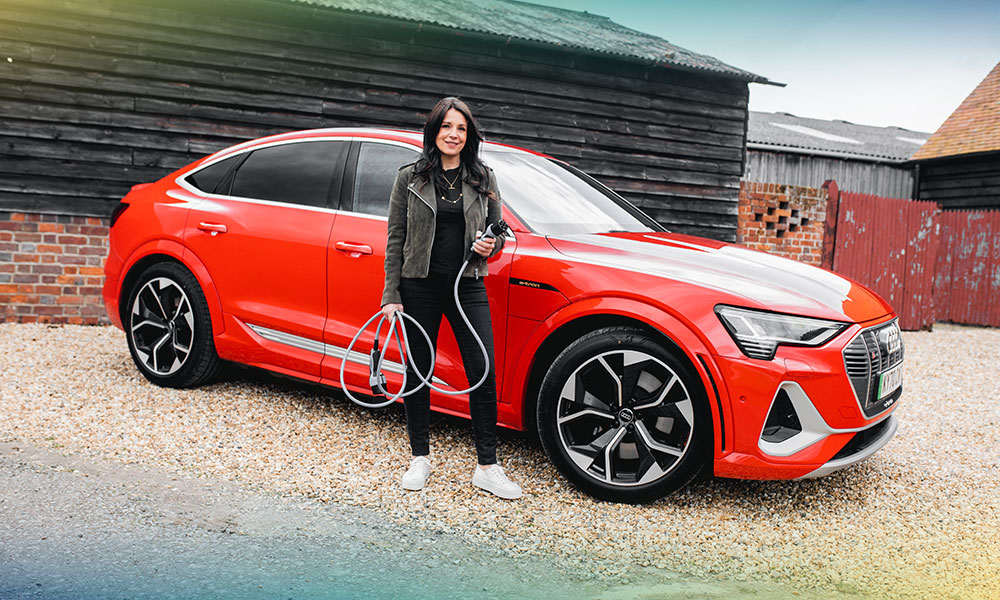The Hyundai Ioniq’s sleek teardrop silhouette is quite distinctive but may well remind you of a more famous hybrid – the Toyota Prius. That’s with good reason, as the Toyota is the Hyundai Ioniq’s nemesis and both are designed to slip through the air as easily as possible in order to maximise economy and electric range.
It’s worked, too, since the Hyundai is impressively efficient. It gets an 8.9kWh battery, which official figures say will get you 32 miles of running on electricity alone. Unlike many other plug-in hybrid rivals, including the Mini Countryman, the Hyundai gets very close to its range estimate and you’ll see 30 miles quite easily if you’re in town most of the time – where electric motors are more efficient.
You can drive the Ioniq PHEV in pure electric mode on the motorway, too – it’ll do motorway speeds without bothering the 1.6 petrol engine, no problem at all, and in this mode it’s also fast enough to give you confidence when merging with faster traffic. The electric range will drop quickly at motorway speeds, though, so expect around 20 – 25 miles on pure electric power if you’re on faster main artery roads.
Ignore the Ioniq PHEV’s claimed economy of 257mpg – it’s more of an indication as it’s a combined figure taking into account the electric running. Just know that you’ll likely see around 45mpg when the petrol’s running, so do your maths based on that and 25-30 miles of pure electric running. Basically, as long as you plug it in regularly you’ll have a super- efficient car.
The Ioniq is really easy to live with, too. There’s loads of room in the back seats for tall adults to get comfortable, and the big hatchback boot is remarkably practical. The long, wide bootfloor means it’ll take a couple of big suitcases easily, although that sloping roofline makes it a shallower boot space than you’ll enjoy in boxier hatchbacks or estates. Being this practical and efficient, as well as good value next to alternatives including the Prius, it’s no surprise that the Ioniq has become a favourite with taxi drivers!
Not only that, but the 2019 update brought an overhaul of the Hyundai’s interior design and infotainment system, so it now gets a huge 10.3-inch colour touchscreen with nav, digital radio, Apple CarPlay and Android Auto, plus two USB connections. It’s no exaggeration to say that this is one of the best infotainment systems in the £30k price range. The system in the top-spec systems in the VW Golf or BMW 225xe might just pip it in some areas, but with its 3D nav views, clear graphics, internet connectivity and logical menus, it really is all the functionality and user friendliness you could ask for.
Actually, the whole car is really all the functionality and user-friendliness you could ask for, given that It’s comfortable and easy to drive, and really well equipped in either trim on offer. It’s just a bit boring, is all. The Hyundai has none of the style flamboyance of the plug-in hybrid Mini Countryman or Renault Captur, and it’s not as fun to drive either. However, if you don’t mind a car that’s all head and very little heart, the sensible Ioniq PHEV is very hard to argue against.











